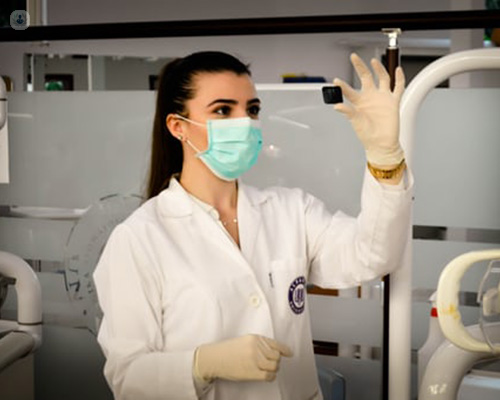Liver disease: what is cholestasis?
Written by:Cholestasis is the term used when there is impairment in the excretion of bile and its constituents from the liver cells and/or small bile ducts in the liver. We’ve asked the Director of the Institute of Hepatology London, Professor Roger Williams CBE, all about this type of liver disease. Here, he explains diagnosis, symptoms and how the condition is managed.

What is cholestasis?
Intrahepatic cholestasis is found in a relatively small group of liver disorders in the adult, namely, primary biliary cholangitis (PBC) usually in middle-aged females and in primary sclerosing cholangitis (PSC) in males. In the latter, there is a clinical association in 75% of cases with inflammatory bowel disease.
PBC and PSC are thought to have an underlying autoimmune basis and, in some cases, the findings overlap with those of autoimmune hepatitis. In the adult, intrahepatic cholestasis is also found with certain antibiotic-related jaundices, for example, with Flucloxacillin and certain sulphonamides in which genetic predispositions may be a factor.
The latter may, in addition, have a degree of hepatocellular necrosis as manifested by elevated levels of the serum transaminases. In earlier times, oral contraceptive use was a frequent cause of intrahepatic cholestasis but with the newer low dose oestrogen preparations, the frequency has become very much less. The very characteristic intrahepatic cholestasis of pregnancy as seen in the last trimester, and which is relieved following delivery, is beyond the scope of this article.
How is cholestasis diagnosed?
In intrahepatic cholestasis, the liver blood tests show predominate elevations in the serum alkaline phosphatase and serum gamma GT levels with some elevation of serum bilirubin. Confirmation of a PBC diagnosis is the finding of mitochondrial autoantibody in the serum, which is often the first pointers of the disease. It is negative in 10%, particularly in males with the condition and confirmation of diagnosis will then be dependent on liver biopsy histology.
In liver biopsies, the cholestasis is evident from bile plugs and feathery degeneration of hepatocytes along with diagnostic features of the causative disease. In PBC multiple small granulomas are present in early stages situated adjacent to the small bile ducts. In PSC, the diagnostic histological feature is of concentric fibrosis around the intrahepatic ducts.
What are the symptoms of cholestasis?
Symptoms of intrahepatic cholestasis comprise skin pruritus, which in PBC can be particularly distressing, though not present in all. It is thought to be related to the retention of toxic bile acids in the serum.
There is also a failure of absorption of fat-soluble vitamins because of the lack of excretion of bile into the gut and maintenance treatment should include vitamin D and calcium supplementation to prevent the development of osteoporosis.
Another common symptom, particularly in PBC, is fatigue, which can be greatly disabling for the patient; the exact cause is uncertain and it may be partly central in origin.
How is cholestasis managed?
Fatigue and pruritus can be severe enough to merit consideration of liver transplantation. This as an indication has become much less in PBC since the use of Ursodeoxycholic acid in maintenance therapy. This drug has made such a difference to patients with PBC. Progression of the disease has been lessened and indeed the lifetime prognosis if the drug is started early, is little different from that of a normal subject. In the 20% of PBC cases that are not responsive to Ursodeoxycholic, there is now a second-line treatment available, namely Obeticholic acid.
Although PSC patients are often given Ursodeoxycholic acid, beneficial effects in slowing progress have not been proven and most of the management is directed towards management of the stricture in the biliary tree and surveillance for cholangiocarcinoma development. As for intrahepatic cholestasis related to antibiotic drug therapy, the lesion in such cases usually begins to improve when the drug is discontinued although in some cases a course of Prednisolone therapy is considered necessary to hasten resolution.
In investigating patients with possible intrahepatic cholestasis, of particular value, is magnetic resonance cholangiopancreatography (MRCP) in excluding causes of extrahepatic bile duct lesion of gallstones or tumour.
Do not hesitate to make an appointment to see Professor Williams CBE via his Top Doctor's profile if you would like to discuss your treatment plan options for cholestasis.


